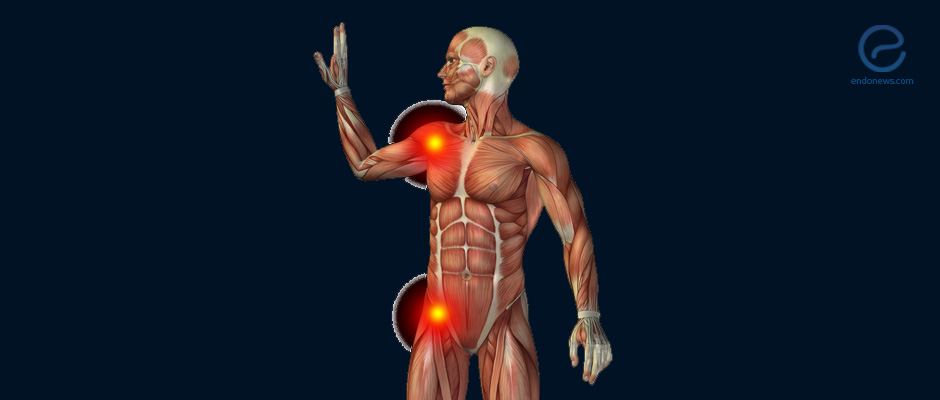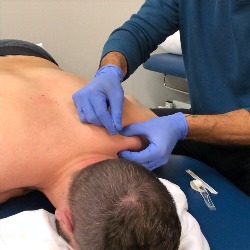
A 4 Step Approach To Treating Our Complex Nervous System When in Chronic Pain
Written by Joel Cabrera, MPT, MTC, CSCS
When a client walks into my clinic on their first visit, my task begins by uncovering the barriers on each individual’s nervous system that may be impacting their primary complaint. I focus on treating chronic issues in the physical realm of our bodies. These are issues that have not responded to previous treatment, normal healing timeframes, medications, or other alternative treatments. Because of this, normal orthopedic protocols, which are what physical therapists are mostly taught in school, do not fully uncover the complexity of what is happening to the individual. I have and continue to spend much of my time observing patterns of pain and how they affect individuals with chronic pain. It is interesting to observe so many commonalities between individuals, despite the origin of their trauma. In other words, our nervous systems respond to pain in a very similar pattern despite the initial trigger. Many experienced therapists over the decades have noticed this pattern and have come up with different treatment approaches to restore a more relaxed muscle state to ultimately improve movement and decrease the client’s pain. In my personal journey of taking courses, I have learned many effective treatments that work….sometimes. I have always felt we are missing a piece of the puzzle when treating chronic pain. The rest of this blog will focus on describing the 4 realms in which we must treat as physical therapists to obtain a more long-lasting and full impact on our nervous system. This is key as chronic pain affects the whole being, not just the muscle and joint complex.
The Physical Therapist should focus and work on all 4 realms in order to progress patients into an independent and fully functional state.
- MENTAL STATE – Uncover and work on the barriers in life or work that may be affecting your stress level.
- BREATHE – Nasal focused – focus on nasal breathing and clearing restriction if present (sinus, deviated septum). This step is very important to move on to the next stage as poor breathing patterns will affect your diaphragm and how it functions increasing sympathetic activity.
- HYPERTONIC MUSCLES – This is where most therapists focus on, using techniques such as manipulation, dry needling, massage, and joint mobilization to relax or releaser muscle tension.
- STRENGTHENING – Once you have addressed the top 3 areas, strengthening comes much easier and with less hiccups.
Our mental state is by far the most important and necessary to work on first in order to move to any other phase of treatment. Our mind’s anxiety or stress will place us in a state of alarm in which our sympathetic nervous system will take over, increasing heart rate, stress hormones, and hypertonicity of the muscle system. As a Physical Therapist, asking key questions to get a feel of what the client is going through and suggesting the importance of and acceptance of their mental state is imperative. Our role is not to solve their problem, but to help them identify that their thought process can affect our body as a whole. The mind-body connection is very real and there are many excellent research articles one can read to confirm this.
Once you have addressed the topic of mental health and how the client’s mental process can affect their pain, we can begin focusing on the client’s breathing. Nasal breathing is very important in the regulation of our diaphragm and in turn to the nervous system. Assessing their rib mobility, left vs right diaphragm function will help us unravel the complexity of the client’s posture and muscular guarding patterns. The Postural Restoration Institute does an excellent job of explaining how proper breathing can affect our muscular and nervous systems as a whole. And more importantly, how to assess it and treat it.
Once we have assessed their breathing patterns and worked on improving any deficits, we can begin to focus on hypertonic muscles. There are many excellent techniques that help release or restore normal muscle tone. Most commonly used are inhibition techniques, dry needling, massage or soft tissue mobilization, and joint mobilization are all good examples that could be used. Each therapist will use what they are most comfortable and trained in to achieve the desired goal.
At this time, one has progressed to movement and strengthening if needed. This is once the pain is controlled, breathing normalized, and mental focus restored. Only then can strengthening be successful and help achieve the client’s functional goals!




